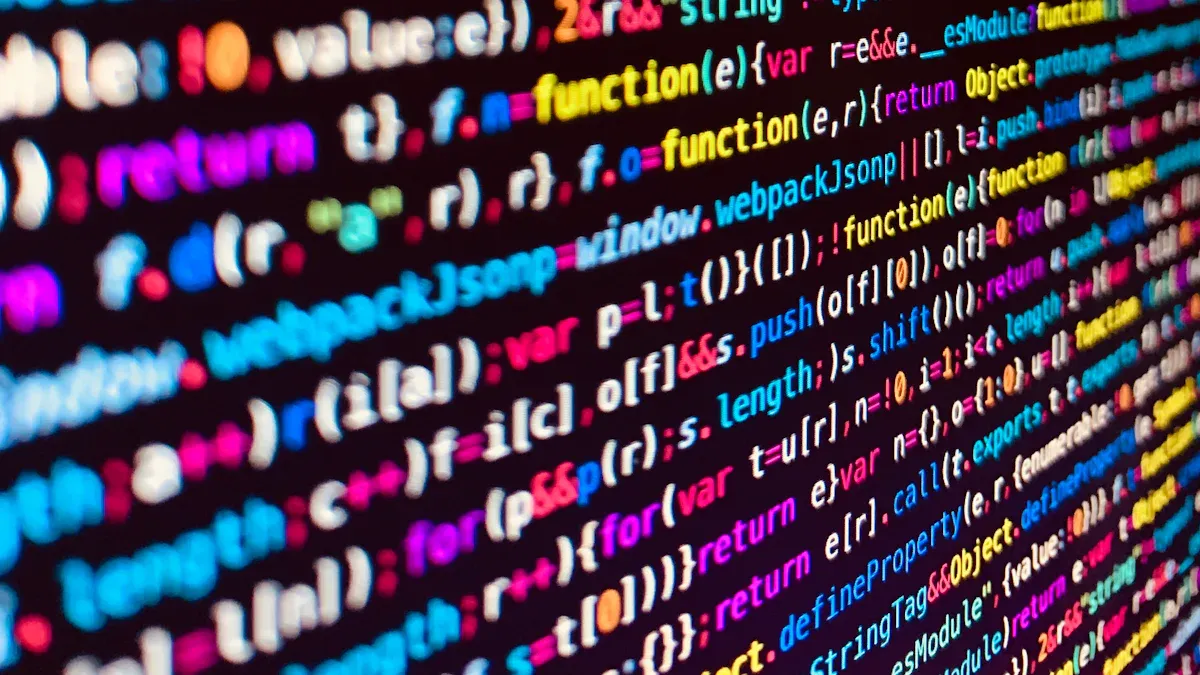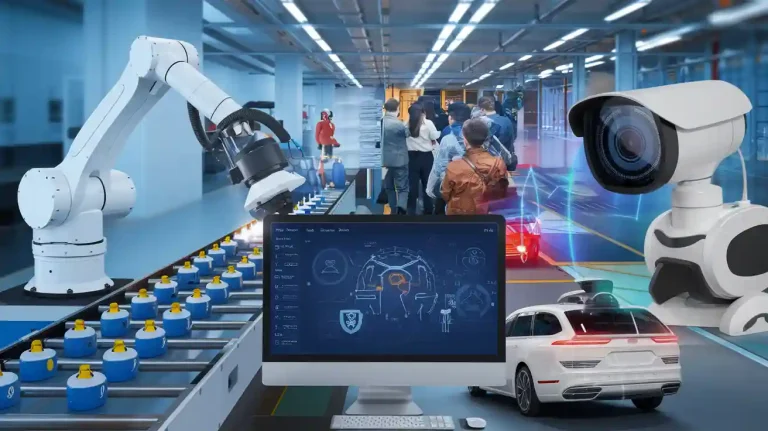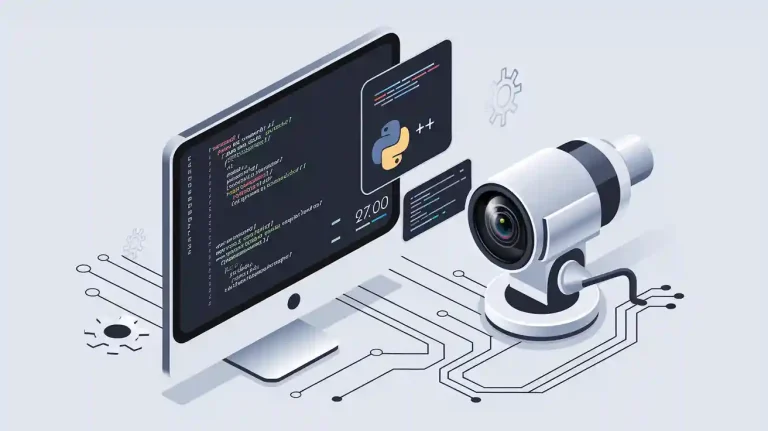
Generalization in a generalization machine vision system means the model can recognize objects or patterns it has never encountered before. Think of it like a child who can identify a dog regardless of its size, color, or breed. This ability allows the child to recognize dogs in any environment, not just familiar ones. In practical terms, generalization makes a generalization machine vision system dependable and effective. For instance, enhancing data quality from 10% to 100% can increase accuracy from 20% to 98%. Additionally, applying regularization techniques can reduce test errors by as much as 35%. The table below illustrates how simple adjustments can significantly improve performance:
| Method | Accuracy or Improvement |
|---|---|
| Data quality boost | 20% to 98% accuracy |
| Regularization | 35% test error reduction |
| Random cropping | 72.88% to 80.14% accuracy |
| Noise injection | 44.0% to 96.74% accuracy |
Key Takeaways
- Generalization lets machine vision systems recognize new objects or patterns they have never seen before, making them reliable in changing environments.
- Avoiding overfitting and underfitting is key; models must learn important features instead of memorizing data to perform well on new images.
- Using diverse and high-quality data, including data augmentation and synthetic images, helps models handle many real-world situations.
- Validation methods like cross-validation test how well a model works on new data and help improve its accuracy and trustworthiness.
- Advanced techniques such as multi-domain learning and regularization boost a model’s ability to adapt across different environments without retraining.
Generalization Machine Vision System
What Is Generalization?
Generalization describes a model’s ability to recognize patterns or objects it has not seen before. In a generalization machine vision system, this means the system can correctly identify items in new images, even if those images differ from the training data. Imagine a person who learns to spot apples in a grocery store. Later, that person visits a farm and still recognizes apples, even though the apples look different and the setting has changed. The generalization machine vision system works in a similar way. It learns from many examples and then applies that knowledge to new situations.
A model achieves generalization by learning the essential features of objects, not just memorizing specific examples. If a model only memorizes, it will fail when faced with new data. Researchers define generalization as a model’s ability to perform well on unseen data drawn from the same distribution as the training data. Factors such as bias and variance influence generalization. High bias limits the model’s flexibility, while high variance causes overfitting. Overfitting means the model remembers training data too closely and cannot handle new data. Underfitting means the model has not learned enough from the data. Both problems reduce the effectiveness of a generalization machine vision system.
Validation techniques, such as K-fold cross-validation, help measure how well a model generalizes. These methods split the data into parts, train the model on some parts, and test it on others. This process checks if the model can handle new data. Diverse and representative datasets also play a key role. When a model trains on varied samples, it learns to recognize objects in many different situations.
Tip: A generalization machine vision system improves when it uses diverse data and strong validation methods. This approach helps the model avoid overfitting and underfitting.
Why It Matters
Generalization matters because real-world environments change constantly. A generalization machine vision system must work reliably in factories, hospitals, stores, and on the road. If a model cannot generalize, it may fail when lighting changes, objects move, or new items appear. Reliable generalization ensures that the system performs well, even when conditions shift.
Industry reports highlight the impact of generalization in practical settings. For example, in electronics manufacturing, machine vision systems have increased defect detection accuracy by 25%. In telecommunications, companies like NTT DoCoMo have improved defect detection by 34% using artificial intelligence. General defect reduction rates reach as high as 99%, leading to better product quality and less waste. Machines now inspect items over 80 times faster than humans, boosting productivity by 40%. These improvements depend on the model’s ability to generalize across different tasks and environments.
| Industry/Application | Improvement Metric | Impact |
|---|---|---|
| Electronics Manufacturing | 25% increase in defect detection accuracy | Improved product quality and fewer defects |
| Telecommunications (NTT DoCoMo) | 34% improvement in defect detection via AI | Enhanced defect detection accuracy through AI integration |
| General Defect Reduction | 99% reduction in defective products | Significant waste reduction and quality assurance |
| Speed of Inspection | 80x faster than humans | Greatly increased throughput and efficiency |
| Productivity Improvement | 40% boost compared to manual methods | Enhanced operational efficiency and cost savings |
Robust validation processes and data validation frameworks support these results. Companies use ground truth data, compare model predictions with performance metrics, and monitor for data drift. Human-machine collaboration in labeling improves ground truth quality. These practices have led to a 27% increase in production throughput and a 34% reduction in false positive waste in manufacturing. The CyberOptics Corp. Sentry 2000 3-D machine vision system, used by IBM and Motorola, demonstrates how generalization leads to consistent, trustworthy results in production lines. These examples show that a generalization machine vision system delivers reliable performance, reduces errors, and adapts to new challenges.
Key Challenges
Overfitting and Underfitting
Overfitting and underfitting present major obstacles for any machine vision model. Overfitting happens when a model learns the training data too well. For example, a deep learning model for visual defect classification in manufacturing reached over 98% accuracy on training data but only about 50% on new images. This gap shows the model cannot make correct predictions on unfamiliar data. Underfitting occurs when models are too simple and fail to capture important patterns. These models perform poorly on both training and test data, leading to few correct predictions. Experts use cross-validation techniques, such as k-fold cross-validation, to check if a model generalizes well. Monitoring validation error during training helps detect overfitting early. The bias-variance trade-off explains these issues: high bias leads to underfitting, while high variance causes overfitting. Selecting the right model complexity and using enough training data can help achieve better generalization.
Domain Shift
Domain shift, also called distribution shifts, affects how well a model performs when the environment changes. When a model trains on one type of data and then faces new data from a different source, its predictions often become less accurate. Empirical studies show that domain shift can cause a significant drop in performance, especially in tasks like object recognition. For example, models trained on synthetic images may struggle with real-world images due to distribution shifts. Researchers have tested methods like domain adversarial networks and multi-modal learning to reduce these effects. Some approaches, such as Relative Norm Alignment, improve accuracy by up to 3% in challenging domain shift scenarios. Addressing domain shift ensures that models make correct predictions even when the data changes.
Data Variability
Data variability refers to differences in images, lighting, backgrounds, and object positions. High variability in training data helps a model learn to make accurate predictions in many situations. However, too much variability without enough examples can confuse models and lower accuracy. Analysts use descriptive statistics, such as variance and standard deviation, to measure variability in datasets. They also use cross-validation and performance metrics like precision, recall, and F1-score to track how well models handle different data types. Environmental factors, such as lighting changes, can increase data variability and affect predictions. Calibration methods and software optimization, including data augmentation and regularization, help control variability and improve model reliability. Consistent data quality and careful monitoring allow models to maintain high accuracy and make correct predictions across diverse conditions.
Domain Generalization

What Is Domain Generalization?
Domain generalization describes a model’s ability to work well across different environments or data sources without retraining. In machine vision, this means a system can recognize objects or patterns even when the images come from new cameras, hospitals, or countries. For example, researchers used a multi-center cardiac MRI dataset collected from hospitals in France, Spain, and China. They trained models on data from one hospital and tested them on images from the others. The models that used domain generalization methods, such as data augmentation and domain mixing, performed well on unseen hospitals. This shows that domain generalization allows a system to adapt to new domains, making it more reliable in real-world situations.
A recent systematic review examined domain generalization methods in deep learning for medical image classification. The review analyzed 77 articles and grouped solutions by the types of domain shifts, such as changes in image quality or object appearance. The review found that learning-based methods help models handle these shifts. The authors also noted the need for better evaluation protocols and benchmarks. This structured overview highlights the importance of domain generalization for building robust machine vision systems.
Note: Domain generalization helps models avoid retraining for every new environment, saving time and resources.
Multi-Domain Learning
Multi-domain learning improves domain generalization by training models on data from several domains at once. This approach teaches the model to focus on features that stay the same across different settings. Experimental results show that multi-domain learning methods, such as MCSAD, outperform other techniques on popular datasets like PACS, Office-Home, and VLCS.
| Method | Dataset | Average Accuracy (%) |
|---|---|---|
| MCSAD | PACS | 85.0 |
| MixStyle | PACS | 83.2 |
| RSC | PACS | 82.5 |
| StyleNeo | PACS | 81.7 |
Researchers found that Collaborative Style Augmentation (CSA) and domain-invariant learning losses help models focus on important object regions. Visualization tools, such as Grad-CAM, confirm that multi-domain learning guides the model to look at the right features. As a result, domain generalization improves, and the model’s performance on new domains increases.
Improving Generalization
Data Diversity
Data diversity plays a key role in building generalizable machine learning models. When a model trains on a wide range of images, it learns to make accurate predictions in many situations. Researchers use several strategies to increase diversity in training data:
- Data augmentation changes images by flipping, rotating, or adding noise, which helps the model handle new scenarios.
- Synthetic data generation uses 3D graphics or neural networks to create new examples, making the dataset larger and more varied.
- Transfer learning uses knowledge from large datasets to improve recognition of rare objects, boosting model accuracy and reducing training time.
- Data augmentation tools help balance samples, making models more reliable in real-world settings.
- Quantitative studies show that these methods improve accuracy, F1 score, and AUC, especially for rare cases.
- A/B testing compares different model versions to measure the impact of data diversity on predictions.
Tip: AI-driven augmentation is becoming more common, especially in medical imaging, to create high-quality, diverse datasets and reduce overfitting.
Regularization
Regularization techniques help models avoid overfitting and improve generalization. L1 and L2 regularization penalize large weights, making the model simpler and more robust. Dropout randomly disables parts of the model during training, forcing it to learn stronger features. Data augmentation, such as random cropping or noise injection, also acts as a regularizer by exposing the model to new variations in training data. Advanced methods like attention regularization and adversarial training further improve model reliability and interpretability. These techniques help the model make better predictions on unseen data and maintain high model accuracy.
Validation Methods
Validation methods check if a model can make correct predictions on new data. Researchers use internal validation, like cross-validation and bootstrapping, to split training data and test the model’s generalization. However, external validation with independent datasets gives a clearer picture of real-world performance. Structured validation, including convergent and divergent validation, adds rigor and helps handle conflicting results. Studies show that these methods improve trust in machine learning models and ensure dependable predictions.
Modern Approaches
Modern strategies push generalization even further. Self-supervised learning lets a model learn from unlabeled data by solving simple tasks, which helps it find useful patterns. Federated learning allows multiple groups to train a model together without sharing raw data, protecting privacy. Studies in medical imaging show that combining federated and self-supervised learning improves predictions, especially when training data is scarce or comes from different sources. Deep learning models like CNNs and GANs help generate synthetic data and align features across domains. Probabilistic and Bayesian methods add uncertainty estimates to predictions, making the model more reliable in unfamiliar situations.
Generalization helps a model recognize new patterns and objects in machine vision systems. A model that learns from diverse data can adapt to different environments. Studies show that a model with spatial pyramid pooling or deep residual learning improves accuracy and generalization. Researchers found that a model can detect diseases across populations and handle images of different sizes. Transfer learning also helps a model apply knowledge to new domains. Beginners should try these strategies to build a strong model for real-world tasks.
- Harmon et al. (2020) showed a model detects COVID-19 pneumonia across countries.
- He et al. (2015, 2016) improved model accuracy with new network designs.
- Weiss et al. (2016) explained how a model transfers learning to new domains.
FAQ
What does generalization mean in machine vision?
Generalization means a machine vision system can recognize objects or patterns it has not seen before. The system uses what it learned from training data to make accurate predictions on new, unseen images.
Why do machine vision models fail on new data?
Models often fail on new data because they memorize training examples instead of learning key features. Overfitting and lack of data diversity cause poor performance when the environment or input changes.
How can someone improve generalization in a vision model?
Data augmentation, regularization, and diverse training samples help improve generalization. Using validation methods, such as cross-validation, also checks if the model works well on new data.
What is domain shift in machine vision?
Domain shift happens when the data used for training differs from the data seen during real-world use. This shift can lower model accuracy and reliability.
Are synthetic images useful for training machine vision systems?
Synthetic images increase data diversity and help models learn to handle new situations. Many researchers use synthetic data to improve accuracy, especially when real images are limited.
See Also
Understanding The Role Of Synthetic Data In Vision
A Beginner’s Guide To Sorting In Vision Systems
Breaking Down Computer Vision Models And Systems









